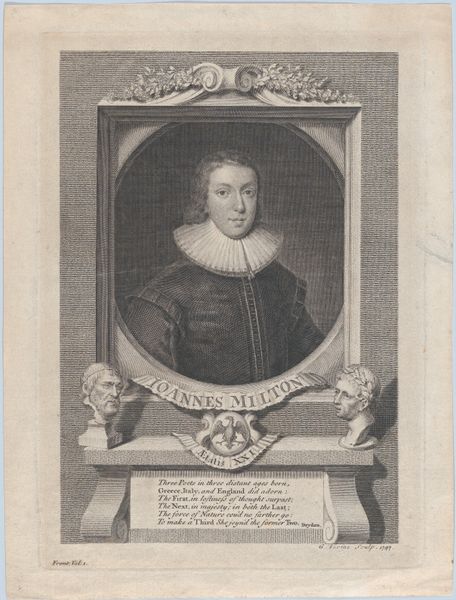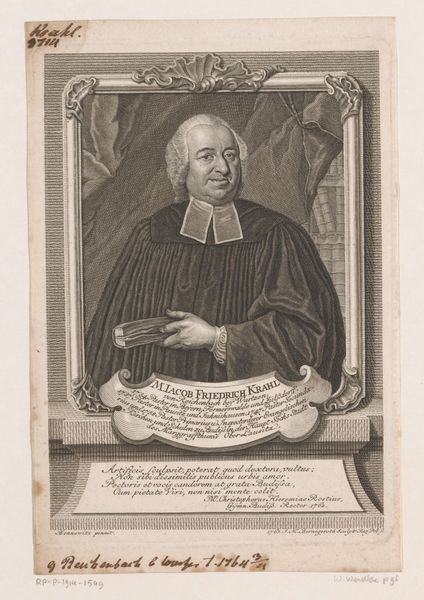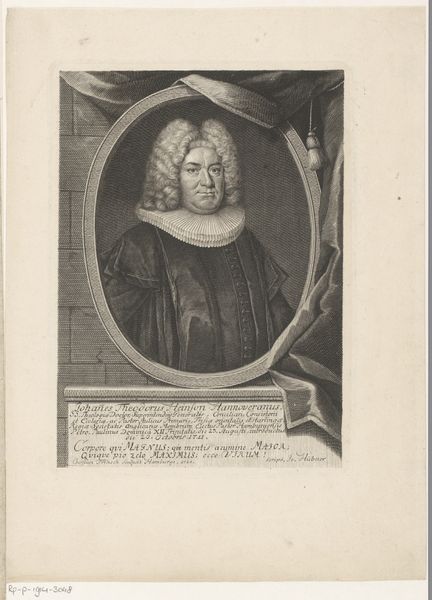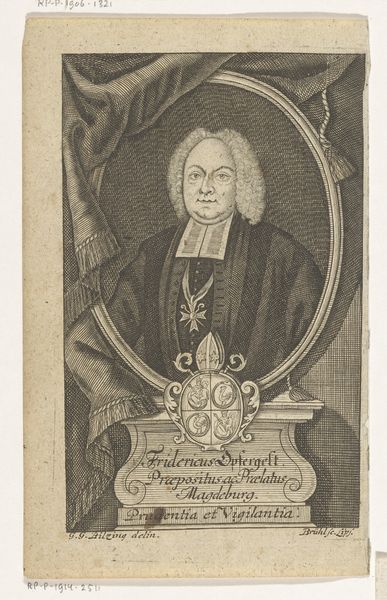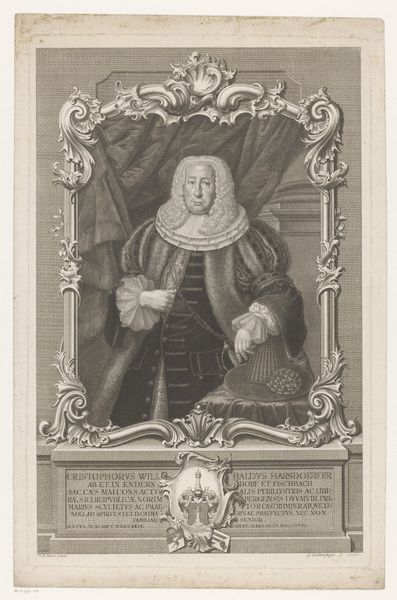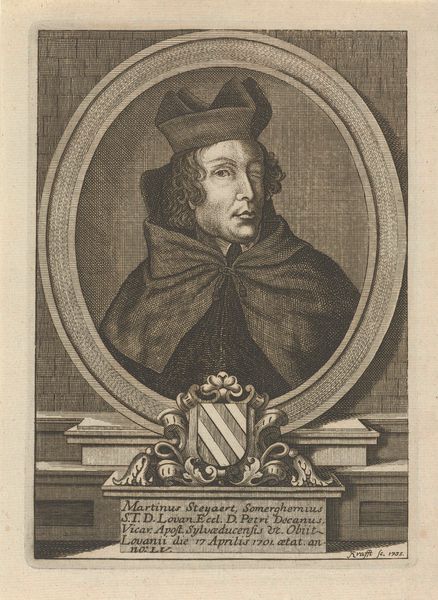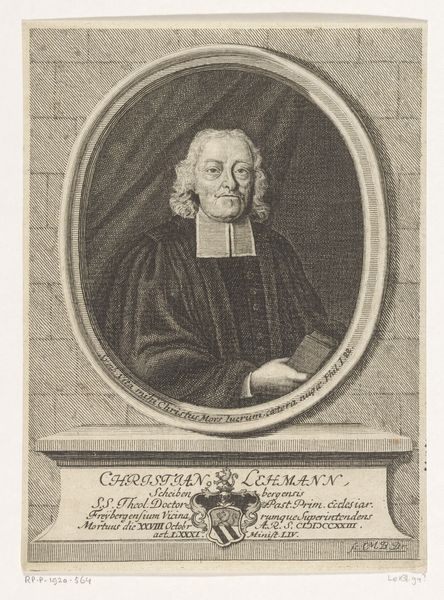
Dimensions: height 200 mm, width 158 mm
Copyright: Rijks Museum: Open Domain
Editor: Here we have a work called "Portret van Bartholomäus Wegelin," an engraving dating from between 1733 and 1806 by Johann Rudolph Holzhalb. It seems very formal, almost stoic, in its presentation. What stands out to you in terms of its composition and form? Curator: Note how the composition is structured by contrasts—the smooth face against the textured wig, the crisp lines of the frame against the softer folds of the curtain, even the solid block of the book against the flowing script below. These create a visual dynamism, drawing the eye around the picture. Have you noticed the quality of line throughout this work? Editor: Yes, there’s a precision, particularly in the detailing of the face and the text. What does that tell us about the artist's intent? Curator: Consider the medium. Engraving demands control and precision. Holzhalb seems to revel in this. Every line contributes to the overall texture and form. Observe how light and shadow are constructed solely through the density and direction of these engraved lines. Where does the line seem to best capture texture? Editor: I think the wig shows a very distinct and pleasing use of light. I’m just starting to appreciate how much the texture matters, particularly in a black-and-white work like this. Curator: Precisely. This piece exemplifies how formal elements can be both representational and expressive. It allows a space where texture informs form, and representation of form defines feeling. Editor: That really changes how I see this portrait; it’s more than just a representation. Curator: Indeed. The artist used formal techniques not only to replicate the likeness but also create visual intrigue for the viewer.
Comments
No comments
Be the first to comment and join the conversation on the ultimate creative platform.

